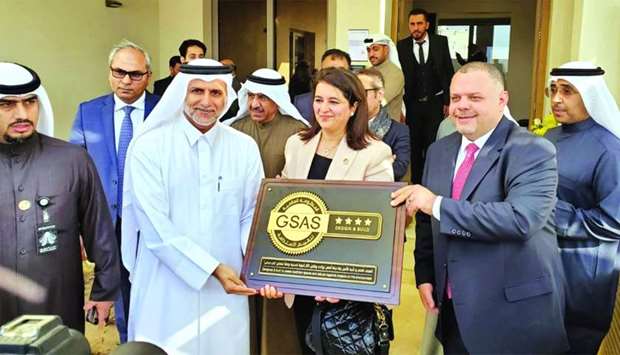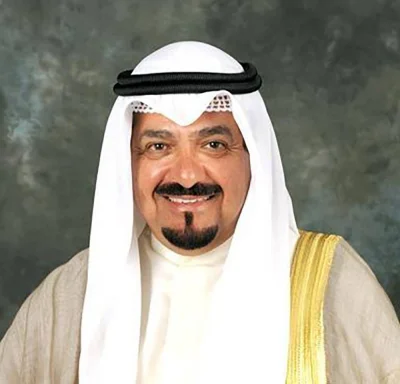Kuwait’s National Technology Enterprises Company (NTEC) has opened its first Low Energy House in collaboration with the Public Authority for Housing Welfare (PAHW) and the Qatar-based Gulf Organisation for Research & Development (Gord).
Located in Jaber Al-Ahmad City, the Low Energy House has been designed and constructed as a prototype for a housing scheme planned by the government for Kuwaiti nationals.
Covering a total area of 400sq m, Low Energy House is the first project in Mena to achieve GSAS D&B 4 Stars rating under GSAS Homes scheme.
Dr Rana al-Fares, Minister of Public Works, Kuwait inaugurated the villa recently.
Also present at the opening ceremony was Anas Meerza, CEO of NTEC, who along with Dr al-Fares, received GSAS plaque of recognition from Dr Yousef Alhorr, founding chairman of Gord.
“The model house benefits from efficient energy generation systems, high quality air conditioning and water recycling that help save 40% of energy and 50% of water consumption, qualifying it to be awarded GSAS 4 Stars rating while also maintaining its economic feasibility,” Meerza said.
“The launch of a green villa is a steppingstone for many similar residential projects to come," Dr Alhorr said.
"The project demonstrates outstanding levels of energy and water efficiency achieved through technologies like solar PV systems, greywater treatment system and smart lighting solutions. Together, these sustainability features make this project the first of its kind in the region. The final certification of this project follows a comprehensive process encompassing several site audits and verification reviews by GSAS Trust – Gord’s Centre of Excellence.”
Behind Kuwait’s Low Energy House Project is the state’s national target to transform PAHW’s standard housing design and construction into one that is sustainable under GSAS framework.
Developed by Gord, GSAS is the Global Sustainability Assessment System that has emerged as the first performance-based green building and infrastructure certification system in the Mena region.
Key green credentials of Kuwait’s Low Energy House include its state-of-the-art air-conditioning system that utilises VRF technology, air recovery systems, advanced thermostat controls and carbon dioxide sensors for controlling indoor air quality.
The project makes use of smart LED lighting technology that comes with dimming and motion sensing features to ensure energy efficiency and power conservation.
The villa’s passive design allows ample daylight while also avoiding solar heat during peak hours of the day.
Similarly, the external lighting is solar powered which can be controlled and monitored through smart metering and home automation system.
Maximising the use of clean energy, the villa features solar powered domestic hot water system facilitated through photovoltaic panels installed on roof and parking areas of the house.
To ensure water conservation through reuse, the house features a small-scale greywater treatment system catering to the vegetation and landscaping needs in outdoor spaces around the build area.
Though modern in terms of systems and operations, the villa’s design is equally reminiscent of Kuwait’s cultural identity.
In terms of materials, the project has made use of locally sourced products to Kuwait’s national economy.
In its crux, the house has been designed and construction with three underlying philosophies: Sustainability, Affordability and Availability.
With the model house now successfully complete, works are expected to begin on a number of housing projects benefitting from the design and construction of Kuwait’s first Low Energy House.



